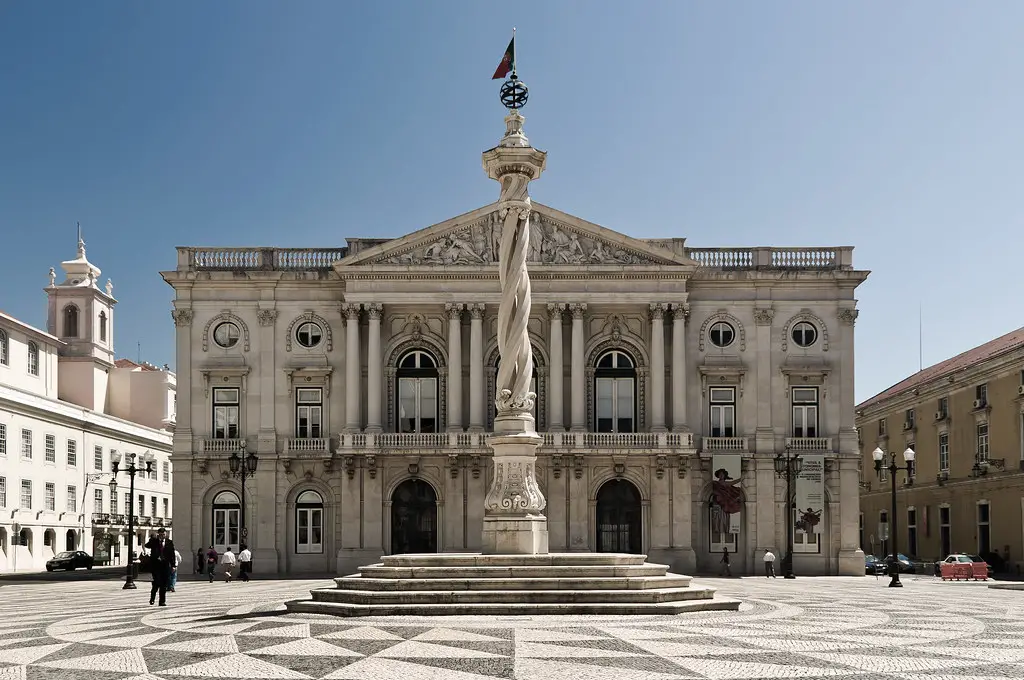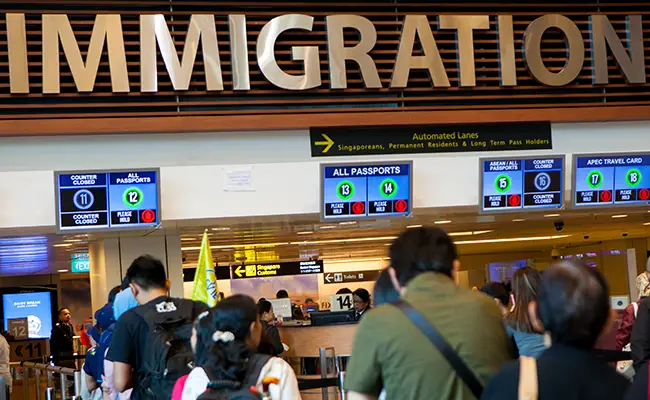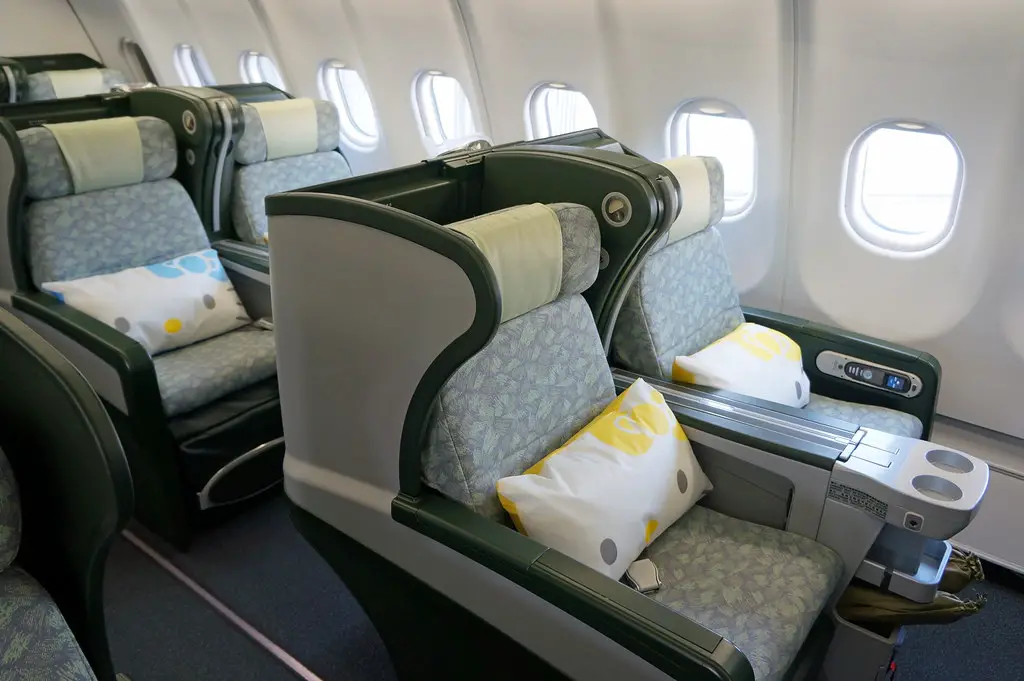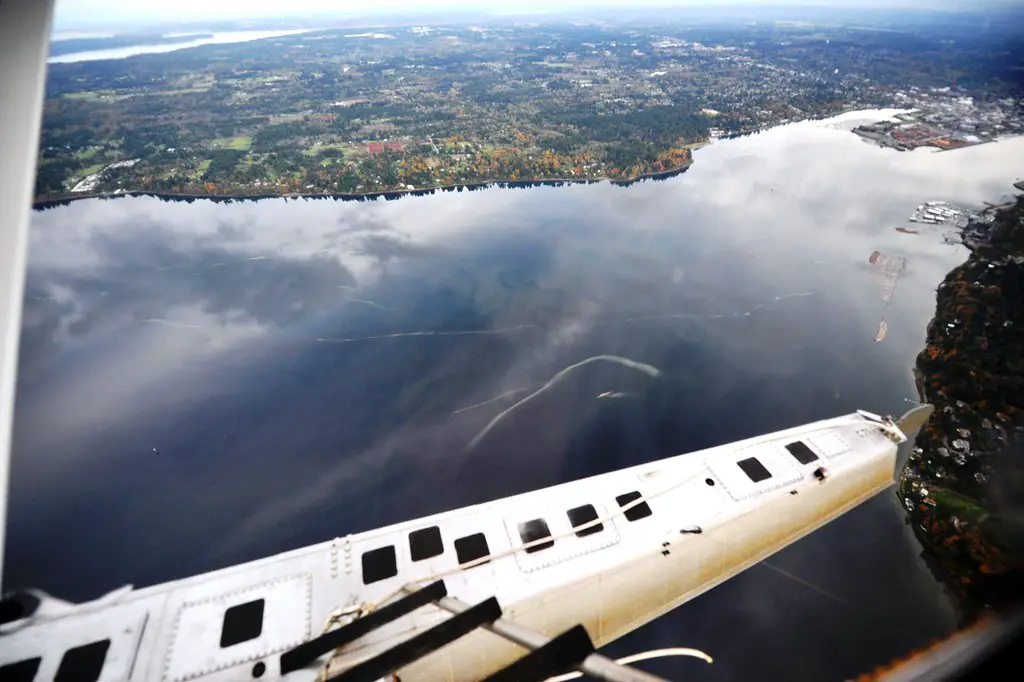In an era where global connectivity is facilitated by the convenience of air travel, the persistent question on the minds of many wanderlust-driven individuals remains: Why are plane tickets so expensive? As passengers navigate the labyrinth of flight booking platforms and gaze at fluctuating prices, the underlying factors contributing to the seemingly high cost of airfare come into focus.
Beyond the surface-level figures lies a complex tapestry of economic dynamics, operational intricacies, and market influences that collectively contribute to the pricing structure of plane tickets.
Unraveling the layers of this intricate web sheds light on the various elements that make air travel a nuanced and, at times, costly endeavor.
1. Historical Perspective

Evolution of Airline Industry
Post-Deregulation Era:
The landscape of the airline industry underwent a seismic shift in the post-deregulation era, marked by the relaxation of government controls on airfares and routes.
As regulatory constraints were lifted in the late 1970s and early 1980s, airlines were granted greater autonomy in determining their pricing strategies and expanding their networks.
This newfound flexibility transformed the industry, fostering an environment where competition intensified, and carriers vied for market share with greater zeal.
The deregulation era not only opened the skies to new players but also set the stage for a dynamic pricing environment, influencing the cost dynamics of plane tickets.
Technological Advancements:
The relentless march of technological progress has significantly shaped the evolution of the airline industry.
From the advent of jet engines to the widespread implementation of computerized reservation systems, technological advancements have enhanced operational efficiency and expanded the scope of air travel.
The introduction of fuel-efficient aircraft, sophisticated navigation systems, and streamlined operational processes has had a profound impact on airlines’ cost structures.
However, the substantial investments required for these innovations contribute to the overarching question: Why are plane tickets so expensive, even in an age of technological advancement?
Impact on Ticket Pricing
Increased Competition:
The post-deregulation era not only witnessed the emergence of new airlines but also fueled intense competition among existing carriers.
With more players entering the market and vying for passengers, the competitive landscape became a double-edged sword for ticket pricing.
While competition theoretically should drive prices down, airlines found themselves grappling with the need to offer attractive fares while simultaneously covering the costs associated with maintaining a modern and efficient fleet.
The delicate balance between competitive pricing and maintaining financial viability has played a pivotal role in determining the cost of plane tickets.
Changes in Consumer Behavior:
Evolving consumer behavior, shaped by technological advancements and shifting preferences, has added another layer of complexity to the pricing dynamics of air travel.
The rise of online booking platforms, the prevalence of comparison tools, and the emergence of budget carriers have empowered consumers with information and options.
However, these changes also impact airlines’ strategies, as they navigate the challenge of meeting customer expectations for affordability while accounting for the various operational and economic factors that contribute to the overall expense of flying.
Understanding these shifts in consumer behavior is integral to unraveling the broader question of why plane tickets remain a substantial financial commitment for travelers.
2. Operating Costs
Fuel Prices
Volatility in Oil Markets:
At the core of the financial challenges faced by airlines lies the inherent unpredictability of fuel prices.
The aviation industry is acutely sensitive to fluctuations in oil markets, where geopolitical tensions, economic factors, and global supply and demand dynamics play pivotal roles.
The rollercoaster nature of fuel costs poses a significant challenge for airlines in forecasting and budgeting, often leading to an unavoidable pass-through of these expenses to ticket prices.
The ongoing question of why plane tickets are so expensive is intricately linked to the volatile nature of oil markets, which can dramatically impact an airline’s bottom line.
Fuel Efficiency Measures:
In response to the perennial challenge posed by fuel prices, airlines have invested heavily in enhancing the fuel efficiency of their fleets.
Technological innovations, such as more aerodynamic designs, advanced engine technologies, and the use of lightweight materials, aim to mitigate the impact of rising fuel costs.
However, the upfront expenses associated with acquiring and maintaining fuel-efficient aircraft contribute to the overall operating costs borne by airlines, influencing the pricing structure of plane tickets.
Maintenance and Technology
Aircraft Maintenance Expenses:
Beyond the initial acquisition costs, maintaining a fleet of aircraft to meet stringent safety and regulatory standards is a substantial financial commitment for airlines.
Routine maintenance, inspections, and necessary repairs contribute significantly to operating costs.
\As airlines strive to ensure the reliability and safety of their fleets, the expenses incurred in rigorous maintenance procedures become a pivotal component in the broader question of why plane tickets are priced at certain levels.
Investment in Modern Aircraft:
The aviation industry continually evolves, and carriers must adapt by investing in modern, technologically advanced aircraft.
While these investments offer long-term benefits such as increased fuel efficiency and operational reliability, the initial capital outlay is substantial.
The infusion of cutting-edge technology not only meets regulatory requirements but also aligns with the industry’s commitment to sustainability.
However, these advancements come at a cost, influencing the pricing strategy of airlines as they seek to recover the substantial investments made in acquiring and integrating modern aircraft into their fleets.
Understanding the intricacies of these investments sheds light on why plane tickets often carry a higher price tag, reflecting the ongoing commitment to innovation and safety within the industry.
3. Regulatory Factors

Airline Regulations
Safety and Security Requirements:
Ensuring the safety and security of air travel is paramount, and stringent regulations are in place to uphold these standards.
Airlines are obligated to comply with a comprehensive set of safety protocols, from regular maintenance checks to crew training and adherence to operational guidelines.
The costs associated with meeting these rigorous safety and security requirements significantly impact the overall expenses incurred by airlines.
Consequently, these regulatory obligations contribute to the broader explanation of why plane tickets are priced at levels that account for the substantial investment in ensuring the well-being of passengers.
Compliance Costs:
In addition to safety standards, airlines must navigate a complex web of regulatory compliance, from labor laws to environmental regulations.
The resources devoted to ensuring adherence to these diverse regulations translate into compliance costs that directly affect an airline’s operational budget.
The expenses related to legal compliance and regulatory adherence, though critical, add another layer to the complex calculus of ticket pricing, leaving travelers to grapple with the consequences of these necessary and non-negotiable expenditures.
4. Market Dynamics
Supply and Demand
Peak Travel Seasons:
The ebb and flow of supply and demand exert a profound influence on the pricing of plane tickets. During peak travel seasons, such as holidays or summer vacations, the demand for flights typically surges.
Airlines respond by adjusting their pricing to capitalize on the increased demand, often resulting in higher ticket costs for travelers.
The intricacies of supply and demand dynamics, particularly during peak periods, contribute significantly to the perennial question of why plane tickets are so expensive.
Flight Availability and Route Networks:
The availability of flights and the complexity of an airline’s route network further shape market dynamics.
Airlines carefully manage their schedules and routes, taking into account factors such as aircraft utilization, operational efficiency, and passenger demand.
Limited availability on popular routes can lead to higher demand and subsequently impact ticket prices.
The intricate dance between flight availability and route networks adds a layer of complexity to the pricing structure of plane tickets, as airlines seek to optimize their operations while meeting the diverse needs of passengers.
Oligopoly in the Airline Industry
Limited Competition on Certain Routes:
The airline industry often grapples with oligopolistic conditions, where a small number of major carriers dominate specific routes or markets.
In such scenarios, limited competition allows airlines to exert greater control over pricing strategies.
On routes with minimal competition, airlines may face less pressure to lower fares, contributing to the overall perception of high ticket prices.
Understanding the dynamics of oligopoly within the industry is essential in unraveling why plane tickets can be expensive, particularly in markets where a few key players hold significant sway.
Impact on Pricing Strategies:
Oligopoly influences not only the competition on specific routes but also the overarching pricing strategies adopted by airlines.
The limited number of major carriers often results in a delicate balance between maximizing profitability and avoiding intense price wars.
Consequently, airlines may strategically set ticket prices to ensure sustainable revenue streams rather than engaging in aggressive fare reductions.
The influence of oligopolistic conditions on pricing strategies underscores the economic realities that contribute to the perceived high cost of plane tickets in certain markets, illuminating a crucial aspect of the broader question surrounding airfare expenses.
Taxes and Fees
Government-Imposed Taxes:
Governments around the world impose various taxes on air travel, ranging from value-added taxes (VAT) to aviation-specific levies.
These taxes, often aimed at funding infrastructure projects or covering environmental externalities, contribute to the overall cost of flying.
Passengers, therefore, find themselves contending not only with the base fare but also with a portion allocated to satisfy the fiscal demands of the governing authorities.
The intricate interplay between government-imposed taxes and the final ticket price forms a crucial aspect of understanding why plane tickets carry a seemingly burdensome financial load.
Airport Fees and Charges:
Airports, as crucial nodes in the air travel ecosystem, impose fees and charges on airlines for the use of their facilities and services.
Landing fees, gate rentals, and security charges are among the various costs that airlines must factor into their operational budgets.
As these fees contribute to the broader expense structure, they play a significant role in determining the ultimate price tag of plane tickets.
The financial relationship between airlines and airports thus becomes a focal point in unraveling the complexities behind why plane tickets are priced at levels that encompass not only the airline’s operational costs but also the fees levied by the infrastructure supporting air travel.
5. Airline Business Model

Low-Cost Carriers vs. Legacy Carriers
Cost-Cutting Measures:
The divergence between low-cost carriers (LCCs) and legacy carriers introduces a critical dimension to the discussion on why plane tickets are priced the way they are.
LCCs, characterized by streamlined operations and a focus on cost efficiency, employ various measures to minimize expenses.
From utilizing secondary airports to adopting a single-aircraft type strategy, these carriers aim to operate with lower overheads.
Conversely, legacy carriers, with their extensive networks and service offerings, often contend with higher fixed costs.
The contrast in cost structures between these two models significantly influences ticket pricing, as passengers are presented with options that reflect the inherent differences in operational approaches.
Ancillary Revenue Sources:
Both low-cost and legacy carriers have increasingly turned to ancillary revenue sources to augment their earnings and offset operating costs.
Ancillary services, such as baggage fees, seat selection charges, and in-flight amenities, contribute to the overall revenue generated by airlines.
For passengers, this means that the base fare might not encompass the full spectrum of services, leading to additional costs that contribute to the perception of why plane tickets can be expensive.
Navigating the nuances of ancillary revenue models is crucial in understanding the evolving landscape of airline business models and its impact on ticket pricing.
Pricing Strategies
Dynamic Pricing Models:
Airlines employ dynamic pricing models that respond to real-time changes in supply and demand. Factors such as booking lead time, day of the week, and seat availability influence the fluctuation of ticket prices.
Dynamic pricing allows airlines to optimize revenue by adjusting fares based on changing market conditions.
While this strategy offers flexibility for both airlines and passengers, it also contributes to the perception of unpredictability in ticket pricing.
Understanding the intricacies of dynamic pricing models provides insights into the adaptive nature of airline pricing strategies.
Yield Management:
Yield management, a cornerstone of airline revenue optimization, involves adjusting ticket prices to maximize revenue based on the perceived willingness of passengers to pay.
This sophisticated approach considers various factors, including historical booking patterns, market demand, and competitor pricing.
By dynamically adjusting prices, airlines aim to achieve the optimal balance between maximizing revenue and filling seats.
The nuanced tactics of yield management shed light on the complex strategies employed by airlines to navigate the competitive landscape, providing a key perspective on why plane tickets are often subject to variability and, at times, higher costs.
Related Topics:
Conclusion
The seemingly high cost of plane tickets is a multifaceted outcome of the intricate interplay of economic, operational, regulatory, and market dynamics within the aviation industry.
Factors such as volatile fuel prices, substantial maintenance expenses, and compliance with stringent safety standards contribute significantly to the operational costs borne by airlines.
Moreover, the influence of market forces, including supply and demand fluctuations and the impact of oligopolistic conditions, further shapes the pricing landscape.
The contrasting strategies of low-cost carriers and legacy airlines, coupled with dynamic pricing models and yield management, reflect the industry’s adaptive response to a competitive and ever-evolving market.
Ancillary revenue sources also play a role, as airlines seek to balance their books while providing diverse services to passengers.
As passengers grapple with the question of why plane tickets are so expensive, it becomes evident that the intricacies of the aviation industry’s financial calculus and the pursuit of operational excellence collectively contribute to the final price tag, making air travel a nuanced and complex economic proposition.
FAQs
Why do plane tickets seem to vary so much in price?
The variability in plane ticket prices is influenced by a range of factors, including the time of booking, demand for specific routes, seasonal fluctuations, and dynamic pricing models employed by airlines. These variables contribute to the dynamic nature of airfare costs.
How do fuel prices impact the cost of plane tickets?
Fuel prices have a significant impact on airline operational costs. The volatility in oil markets directly affects the expense of jet fuel, and as one of the major operational costs for airlines, fluctuations in fuel prices are often reflected in ticket pricing.
What role do government taxes and fees play in the overall cost of a plane ticket?
Governments impose various taxes on air travel, such as value-added taxes and aviation-specific levies. Additionally, airports charge fees for the use of their facilities. These government-imposed costs contribute to the final price of plane tickets.

1 thought on “Why Are Plane Tickets So Expensive”